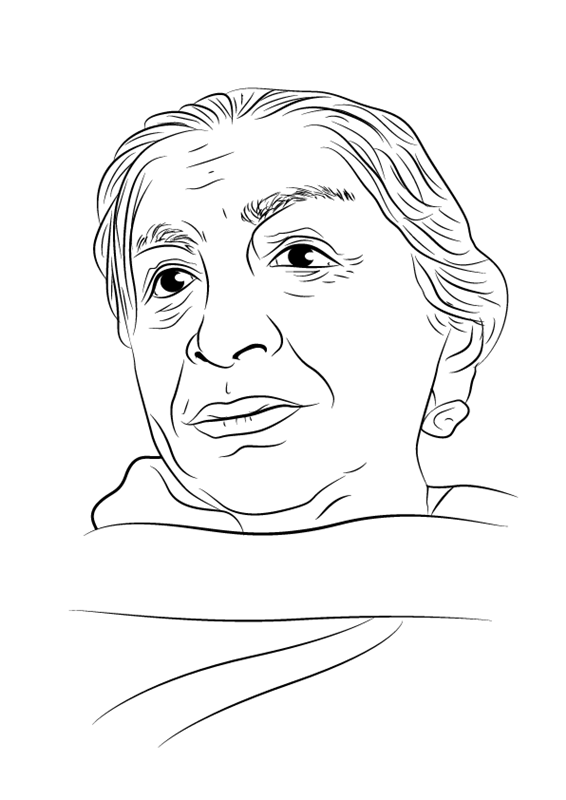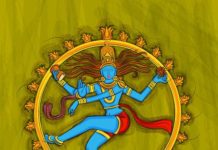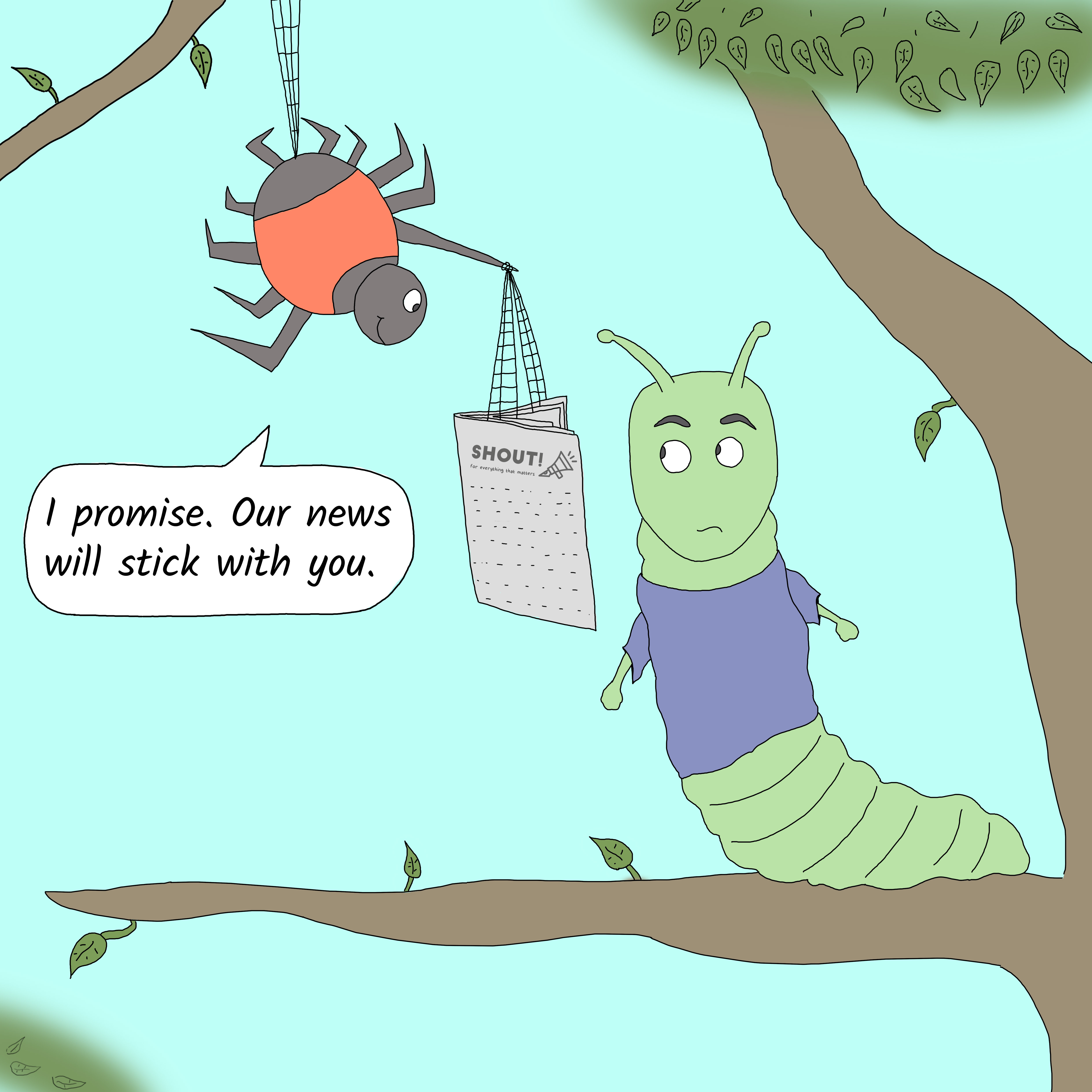CHARACTE-GORIES involved:
THE STORYTELLER and AN EMISSARY FROM THE PAST
Our Granny with stories writes to our Professor of History.
Dear Emissary from the Past,
Years ago, you took it upon yourself to share history. The history of those within textbooks, and those beyond textbooks. And in reliving these stories, journeys, and experiences, you often found yourself at a confluence. Today, I write this letter in response to your abundant questions about this intertwining of art, mythology, poetry, and history. In the same way as our worlds meet, one, recorded in the archives, and the other, a world of storytelling and art, so is this conflux. Sarojini Naidu is a unique blend, in her journey and work. Each lesson, exemplified in words and imbibed in action. Here is an ode, to the nightingale. To her art, to her story, to her truth.
“As long as I have life, as long as blood flows through this arm of mine, I shall not leave the cause of freedom…I am only a woman, only a poet. But as a woman, I give to you the weapons of faith and courage and the shield of fortitude. And as a poet, I fling out the banner of song and sound, the bugle call to battle. How shall I kindle the flame which shall waken you men from slavery…”
Feminism. A present-day war cry. To bound it by definition would mean to constrain the infinite facets of a woman. It is a thought that promulgates choice. The choice that each woman gets to make. A choice that cannot, that should not be belittled or disrespected whatever it may be. But it is an idea that cannot be simplistically stated as a fight for equality. It is layered, for we, are layered. Because to show aggression or superiority is not equal. To denigrate the choice of becoming a wife, a mother or an entrepreneur is not equal. The movement necessitates a balance.
Sarojini Naidu, her life and her work epitomize the balance we strive for. The fight that we’re fighting, is for every individual. To accept, to survive, to thrive. She was the first of many women to lead India to freedom. The first of many to represent the nation at a global level. The first female governor of an Indian state. She was an amalgamation of strength and spirit in the public sphere. A patron of the empowerment and emancipation of women and their rights, she urged for more representation in the Congress. She travelled the length and breadth of India championing social welfare. This was her resolve. And it was bloody hard. Days were spent protesting and nights, in jail. She was a feminist not only in words and thought but in action.
At a time of oppression and denunciation, she became a woman who was tenacious, passionate and driven. She was a wife, a mother, a political reformer, a poetess. Deep-rooted Indian culture, undivided yet fractionalized often became a muse to her poetry. Today her art becomes my muse. Her poetry is a journey. One of celebration and sorrow. They tell stories. By a woman, of women and for women. But to simply review or critique her work is unthinkable, unattainable even. It is for us, to only understand her words and find meaning. Sometimes, our own meaning.
“Her life is a revolving dream
Of languid and sequestered ease;
Her girdles and her fillets gleam
Like changing fires on sunset seas;
Her raiment is like morning mist
Shot opal, gold and amethyst.
From thieving light of eyes impure,
From coveting sun or wind’s caress,
Her days are guarded and secure
Behind her carven lattices;
Like jewels in a turbaned crest,
Like secrets in a lover’s breast.
But though no hand unsanctioned dares
Unveil the mysteries of her grace,
Time lifts the curtain unawares,
And sorrow looks into her face..
Who shall prevent the subtle years,
Or shield a woman’s eyes from tears?”
Pardah Nashin. It means a lady who sits behind the enigma of the purdah. The purdah system was a significant part of Islamic culture and is an accepted practice among a few families even today. To the casual eye, the lady behind the purdah lives in a world of comfort and luxury. She is adorned with lustrous and gleaming jewellery. Her clothing is beautifully compared to the morning mist and is embroidered with gold and amethyst. The lady behind the purdah and the world around her (enclosed by the four walls of her room) is described with utmost grace, sensitivity and elegance. Yet, she is shielded. From the discomforts of the scorching heat, or cold winds. She is hidden, from the eyes of the world. From the lustful looks and wicked smirks. Her beauty cannot be unveiled by onlookers. They must first seek sanction from those who guard her. They guard her beauty and body, she is caged. But her soul is her own. Her sorrow and tears are for her to shield. For nobody else cares. The lyric is, however, filled with tones of grace and acceptance of circumstance. Naidu reflects on the subliminal yet apparent Hyderabadi culture that engulfed her childhood. She leaves the reader with an insight. An insight into culture. Into one, among the multitudinous facets of a woman. She leaves us to question the shield that was.
Sarojini Naidu was well versed with the adversities of it all. She wielded her position to lead. To lead people to a better tomorrow. Her involvement in the struggle for freedom whether beside Gandhi ji during the salt satyagraha or as the founder of the women’s Indian association was meaningful. This freedom that she relentlessly fought for, was not only from the outsiders but also from those who believed that women were inferior. That they somehow deserved less. Her poetry makes us aware of the centrality of women in Indian culture. She exemplifies the symbols that make women who they are.
“Bangle sellers are we who bear
Our shining loads to the temple fair…
Who will buy these delicate, bright
Rainbow-tinted circles of light?
Lustrous tokens of radiant lives,
For happy daughters and happy wives.
Some are meet for a maiden’s wrist,
Silver and blue as the mountain mist,
Some are flushed like the buds that dream
On the tranquil brow of a woodland stream,
Some are aglow with the bloom that cleaves
To the limpid glory of new born leaves
Some are like fields of sunlit corn,
Meet for a bride on her bridal morn,
Some, like the flame of her marriage fire,
Or, rich with the hue of her heart’s desire,
Tinkling, luminous, tender, and clear,
Like her bridal laughter and bridal tear.
Some are purple and gold flecked grey
For she who has journeyed through life midway,
Whose hands have cherished, whose love has blest,
And cradled fair sons on her faithful breast,
And serves her household in fruitful pride,
And worships the gods at her husband’s side.”
Beautiful. Pure. Joyous. In a plethora of words, we choose these to describe a woman in the various roles she takes on throughout her life. ‘The Bangle Sellers’ by Naidu depicts the various phases and stages in the life of an Indian woman. In a scintillating and celebratory manner, the poem compares these stages with bangles. In India, bangles are adorned by women for various occasions. Every colour, every number has meaning and significance. More often than not, they are symbolic of prosperity, happiness and peace. The shades change from blues to reds, as a woman goes from being a maiden to bride. Through laughter and love, she becomes a wife and then mother to her child. The bangles on her wrist change and the emotions evolve, as a woman grows and moulds herself into each role. The poem celebrates womanhood. Because it is worth celebrating. Every aspect, every phase, every facet.
Strongly, stealthily, subtly, Sarojini Naidu pioneered the popularisation of the feminist perspective. It became important for a woman to own it. Her beauty, her confidence, her sexuality, her intelligence and her ambition. It became important for a woman to respect herself first. To learn how to love herself. As most Indians do, Naidu appreciated art. And the subcontinent was brimming with it. Music, lyrics, movement and dance often touch upon our deepest emotions. It transcends the ordinary.
“EYES ravished with rapture, celestially panting, what passionate bosoms aflaming with fire
Drink deep of the hush of the hyacinth heavens that glimmer around them in fountains of light;
O wild and entrancing the strain of keen music that cleaveth the stars like a wail of desire,
And beautiful dancers with houri-like faces bewitch the voluptuous watches of night.
The scents of red roses and sandalwood flutter and die in the maze of their gem-tangled hair,
And smiles are entwining like magical serpents the poppies of lips that are opiate-sweet;
Their glittering garments of purple are burning like tremulous dawns in the quivering air,
And exquisite, subtle and slow are the tinkle and tread of their rhythmical, slumber-soft feet.
Now silent, now singing and swaying and swinging, like blossoms that bend to the breezes or showers,
Now wantonly winding, they flash, now they falter, and, lingering, languish in radiant choir;
Their jewel-girt arms and warm, wavering, lily-long fingers enchant through melodious hours,
Eyes ravished with rapture, celestially panting, what passionate bosoms aflaming with fire”
Sarojini Naidu wrote the poem ‘Indian Dancers’ and it captures the very reason to dance, to sway and to swing. The Indian dancer is bold yet fluid. Her eyes and expressions are beyond captivating, elysian even. Each movement is compared to a celestial experience. The music, even more heavenly. Whether it’s the ‘gem-tangled hair,’ or ‘intertwining smiles,’ the words Naidu has used to describe the Indian dancer are alluring and erotic. They exude confidence and exemplify the fortitude that each woman has, or sometimes, should have the courage to embrace. And 80 years later, we find ourselves looking for such reminders. Reminders that urge us to embrace our own elegance. To be a little less fearful. To appreciate art and the artist.
In 2015, Vogue India released a short film called ‘My choice.’ It was a recitation of a poem written by Kersi Khambatta to make aware, to strengthen and to empower.
“I choose to be different
I am the universe
Infinite in every direction
This is my choice.”
Ironic isn’t it? To find history repeats itself at every juncture of this fight. The repetition, the assertion, take the form of words, rhythm and movement. Poetry often takes us to the depths of ideas, themes, and ourselves. The verses that we read, remain etched in our minds.
“Poignant and subtle and bitter perfume
Exquisite, luminous, passionate bloom,
Your leaves interwoven of fragrance and fire
Are Savitri’s sorrow and Sita’s desire,
Draupadi’s longing, Damayanti’s fears,
And sweetest Shakuntala’s magical tears.”
The poem ‘Nasturtiums’ is metaphorical in every way. At the surface, the lyric is a comparison of the flowers with the eternally radiant and immortal women of Indian mythology. Naidu exemplifies the yearning for the revival of the cultural glory of India. But on a deeper level, she brings out distinct feminine sensibilities. She takes pride in Indian womanhood, in every feeling that a woman experiences and credits her for it. Sita was unafraid to take life head-on and will always be an embodiment of courage, purity and dedication. Savitri was born out of devotion herself. It was Damyanti’s choices that guided destiny. Born out of fire, gentle but not submissive was the wife of the Pandavas, Draupadi. Shakuntala is a woman in a patriarchal society. She loved with all her heart. She stood for herself and her beliefs with utmost conviction. Each of them, all of them, were brave and virtuous in their own right. The poem, in many ways, allowed those women to feel, to be.
Her works, in all their entirety, reiterate that feminism is the choice that we have. Just like the “leaves interwoven of fragrance and fire,” or “The universe, infinite in every direction,” we are multi-faceted. We have the choice to be bold or soft-spoken, to be vulnerable or impervious, to lead like Draupadi or to love like Shakuntala. It is our choice.
And so dear emissary, we continue to look back. To seek inspiration from the women of the past. The fight is timeless but will be won. To attain a balance. To own it. To flaunt it. To be seen as an equal.
Warm regards,
Granny.
Maahi Shah is a lot of brains, talent and words. We dare you to find a match or just shut up and listen, sit down and read or stand agape.
DISCLAIMER: The content on this website is merely an opinion and not intended to malign any religion, ethnic group, organisation, company or individual. Nothing contained herein shall to any extent substitute for the independent investigations and sound judgment of the reader. While we have made every attempt to ensure the accuracy and completeness of the content contained herein, no warranty or guarantee, express or implied, is given with respect to the same. The SHOUT! Network is neither liable nor responsible to any person or entity for any errors or omissions, or for any offense caused from such content.
In addition to the above, thoughts and opinions change from time to time… we consider this a necessary consequence of having an open mind. This website is intended to provide a semi-permanent point in time snapshot and manifestation of the various topics running around our brains, and as such any thoughts and opinions expressed within out-of-date posts may not be the same, or even similar, to those we may hold today.
Feel free to challenge us, disagree with us, or tell us we’re completely nuts in the comments section of each piece. The SHOUT! Network reserves the right to delete any comment for any reason whatsoever (abusive, profane, rude, or anonymous comments) – but do SHOUT! with us, if you will.














